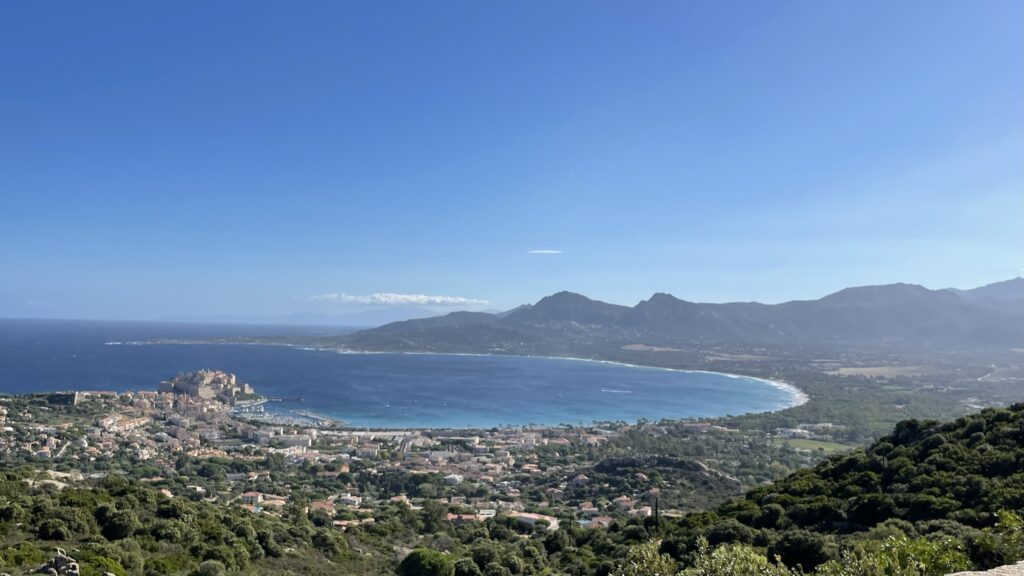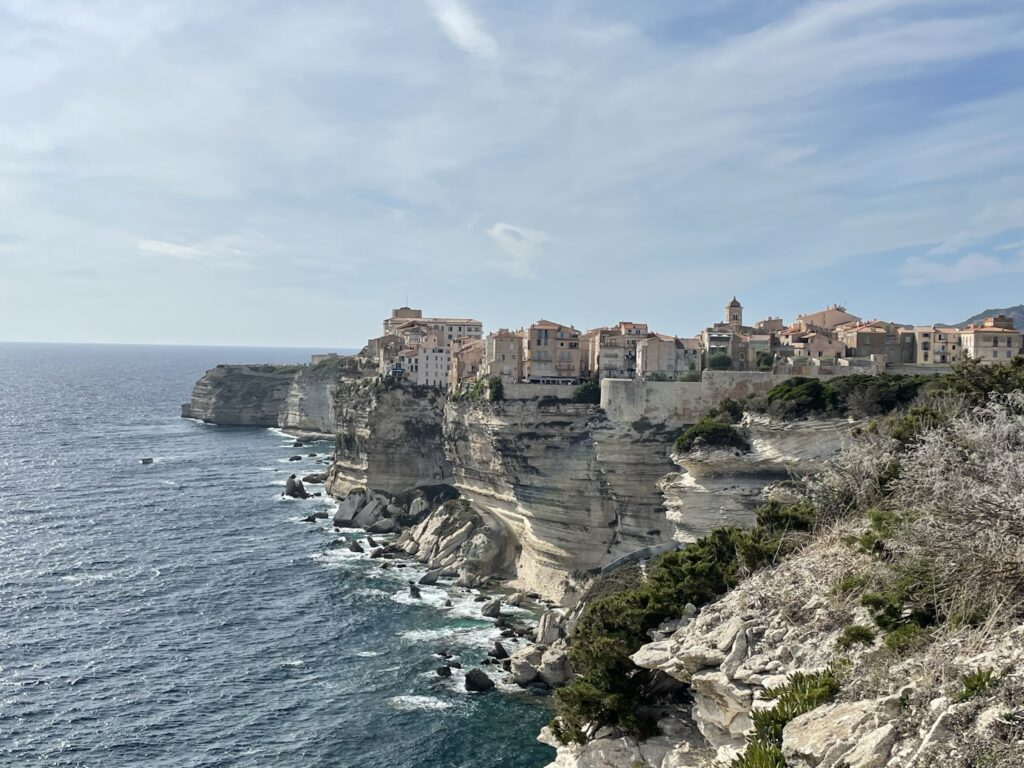





Corsica is covered in gnarley bushes with tough leatherlike leaves, named maquis. Impenetrable and very strong it served as a hideaway for ages to pirates, vendetta victims and freedom fighters alike. It should come as no surprise that the resistance in the 2nd world war was named Maquis after the tough freedom fighters from Corsica. Even today we found many passionate outcries painted on the walls by its fiery inhabitants.






Before Napoleon Bonaparte made his birthplace, Ajaccio, the capital of Corsica it used to be Bastia situated on the leeside of the island it was more directed towards the Italian coast. Nowadays you still see many Italian influences in Corsica in its architecture as well as in the names of the places and people. Even the great emperor himself had an Italian name, Napoleon originates from “big Nabulio” which translates in Italian as Nabulione.




When sailing in the western Mediterranean it is impossible to miss the Genovese Towers. Where nowadays they make for picturesque and peaceful images on remote landslips they are a reminder of the days of warships and pirates of the 16th century. General Nelson thought them very useful and even had several built in the UK. His British Naval forces struggled for a long time and didn’t succeed to capture the tower of st. Florent. Not much is left of it today but it is still impressive to see how wellmade and strong it was.
To explore the Maquis by ourselves we rented a 4wheel drive and went for the desert des Agriates a dry and desolate strip of land near the bay of st. Florent.




The sunny bay of st. Florent.










In Calvi we met our friends of the ”Witte Walvis” and the ”Joy” both survivors of the terrible storm which hit Corsica on august 18. Around 80 yachts sunk or were thrown on the beach or rocks and many people had to say goodbye to their beloved floating house.









The old Fortress of Girolata controls the bay in the beautiful national parc of Scandola. This Unesco listed nature parc is of austere beauty and mostly only accessible by boat. After circumnavigating the jagged coastline with its many sad wrecks which are still to be seen after the storm of the 18th we drop anchor in a lovely cove near the village. The next day we visit by dinghy to admire the old village and its cows roaming freely around. Girolata is only accessible by sea or by a 15km footpath This however didn’t prevent la Poste Nationale Francaise in the person of Guy le facteur to bring in the daily post. Every day with his donkey, Tchou Tchou, a real 4×4 of the Maquis, he would traverse the 15 km long footpath to the village. Only since his death, in 2006 the post comes by sea.
In spite of the difficult accessibility of the place there are a few very good restaurants of which we took advantage to replace our daily bread with some delicious cooking for lunch.










Of course it wouldn’t do to leave Corsica without a visit to Bonifacio. At the most southerly end of the Island built on steep cliffs it certainly has an impressive approach. The narrow entrance is only spotted close to the vertical rock walls and is very busy with superyachts, tourist boats and even old clippers. After having moored we climbed the long stairs to the town and were rewarded with a broad view onto the strait of Bonifacio and Sardegna. When sailing away upon looking back it makes you wonder how long the houses will remain hanging on to those cliffs. Some of them barely have any rock underneath and seem to be ready to fall into the sea.

